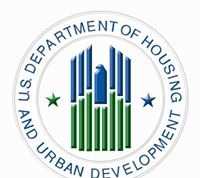WASHINGTON, D.C. – RealEstateRama – Flooding from the Sept. 19 tropical storm resulted in more than 10,600 flood insurance claims being filed by Texas homeowners, business owners and renters. As of Oct. 29, policyholders have been paid 40 percent of claims or more than $280 million to repair their homes.

Flooding is the nation’s costliest and most common disaster. Fortunately, property owners who live in communities participating in the National Flood Insurance Program can purchase affordable protection to insure against flood losses.
Why Do I Need Flood Insurance?
Here are some important facts to keep in mind:
- Policies issued by the NFIP pay regardless of whether there is a Presidential Disaster Declaration in place.
- The average flood insurance claim for Tropical Storm Imelda is over $54,000 and does not have to be repaid.
- Standard homeowner’s insurance policies do not cover floods. So, it’s wise to consider flood insurance even if you are not required to purchase it.
- Even if you live outside a high-risk flood zone, called a Special Flood Hazard Area, it’s a wise decision to buy flood insurance. In fact, statistics show that people who live outside the high-risk areas file more than 25 percent of flood claim nationwide.
- If it can rain, it can flood. Flood zones are areas where there is a higher statistical probability of a flood occurring, but that doesn’t mean floods don’t occur elsewhere. In fact, in Texas over the last five years, several floods exceeded the statistical probability, putting more homes and properties in harm’s way than were expected.
- The Federal Emergency Management Agency calculations show that 1 inch of water can cause $25,000 worth of damage to your home. 18 inches or more of water could mean repairs to the electrical system and the heating and cooling system. It also means replacing doors, appliances and cabinetry.
How does flood insurance work?
- If your community participates in the National Flood Insurance Program (NFIP), as a homeowner or a business, both building and contents coverage can be included in your policy. Renters can get coverage for contents only.
- Contact your insurance agent to find out if your community participates in the National Flood Insurance Program. Flood insurance from the NFIP is only available in participating communities. Ask your agent if your state and community participate or look it up online in the Community Status Book at: www.fema.gov/national-flood-insurance-program-community-status-book.
- In Texas and other states recently impacted by storms and flooding, NFIP has streamlined the claims process, enabling policyholders to receive advance payments to jump-start their rebuilding. In 2018, policyholders quickly received about 25 percent of their payments as an advance. Advance payments may provide:
- up to $5,000 without an adjuster visit or additional documentation; or
- up to $20,000 with photos/video evidence and receipts or a contractor’s estimate.
- A Preferred Risk Policy (a lower-cost flood insurance policy) provides both building and contents coverage for properties in moderate-to-low risk areas. This policy can be purchased for as little as $395 per year.
When should I buy a policy?
As soon as possible. There’s generally a 30-day waiting period.
- NFIP cannot pay a claim if you don’t have a policy in effect when damage occurs.
- A new insurance policy from NFIP becomes effective 30 days after you buy it, unless the purchase is associated with the origination, renewal or extension of a federally backed loan on property in a high-risk area.
Even if I’m not in a flood hazard area, can I purchase flood insurance?
- Yes, if your community participates in NFIP. You are eligible to purchase a flood policy with the same coverage you would receive if you lived in a high-risk area.
Can I get flood insurance if I’m renting a property?
- Yes. If you are a renter who lives in a community that participates in NFIP, you can get flood insurance to cover the contents of your home, apartment or business.
How much does a policy cost?
- Your insurance agent can talk with you about cost of coverage for your property.
- NFIP policy holders can choose the amount of coverage.
- The maximum for one-to-four family residential structures is $250,000 in building coverage and $100,000 in contents coverage.
- For residential structures of five or more units, the maximum is $500,000 in building coverage and $100,000 in contents coverage.
- The maximum for businesses is $500,000 in building coverage and $500,000 in contents coverage.
How much will I get from NFIP after my building or contents are damaged by a flood?
- The amount paid to the policyholder on a homeowner’s flood insurance policy will cover only the cost of actual damage caused by the flood.
- The amount paid on contents will cover only actual losses caused by the flood.
- The amount paid to businesses covered for structure and contents will be only for actual losses caused by the flood.
Where can I buy flood insurance?
Texas residents can learn how to buy a flood-insurance policy by calling their insurance agent or by calling 800-427-4661, call 711 (TTY and other services available) and 866-337-4262 for VRS. Information is also available online at floodsmart.gov For flood information and safety tips visit www.ready.gov/floods. Find the Spanish-language website at www.listo.gov.
For more information on Tropical Storm Imelda and Texas recovery, visit the Tropical Storm Imelda webpage at www.fema.gov/disaster/4466, the @FEMARegion6 Twitter account, www.fema.gov/txmit and the Texas Division of Emergency Management website. TTY users may call 800-462-7585.
The U.S. Small Business Administration is the federal government’s primary source of money for the long-term rebuilding of disaster-damaged private property. SBA helps businesses of all sizes, private nonprofit organizations, homeowners and renters fund repairs or rebuilding efforts and cover the cost of replacing lost or disaster-damaged personal property. For more information, applicants may contact SBA’s Disaster Assistance Customer Service Center at 800-659-2955. TTY users may also call 800-877-8339. Applicants may also email "> or visit SBA at www.SBA.gov/disaster.
















